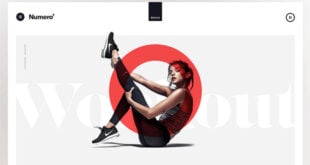
When users visit your site, they first see the colors. And maybe you know that your color scheme may significantly influence both consistency and style.
In the web designer’s design process, the color palette for the website needs a great deal of care and study. Due to the broad span of this subject, several recommended practices are recommended to design the ideal color scheme. Furthermore, we will be better prepared for future design-related decisions and jobs as web producers if we comprehend the importance of website color schemes in the design process.
Web designers may use so many “rules” to make the most of their talents, prestige, and expertise as web designers. Now, it’s time to study and comprehend the importance of color palettes for website design and some guidelines you can use to make your web the finest. So let’s find out in this article.
Table of contents
| You may need the following: 40+ Amazing Color Schemes for Websites That Engage Users Top 70 Awe-Inspiring Green Websites (+ Color Schemes) 15+ Best Color Palette Generators for Website 2022 (+FAQs) |
What Is the Color Palette?
The website color palette is a set of colors chosen by the designer for the website’s design. Color schemes may incorporate as many or as few colors as the designer considers appropriate. In addition, each shade can be used for a range of items on the website, which means that the same hue can be used for various components.

Color schemes are often separated into two groups: primary and secondary. The main colors are often the most dominating colors on the website, accounting for backdrop colors, menu colors, logo colors, etc. The secondary colors are frequently utilized as accent colors and some other purposes. A color pallet often has many shades of the same colors, giving the website’s design a diversified yet consistent feel.
When choosing a color palette for a website, consistency is one of the most important considerations. A consistent color palette is essential to establishing a solid connection between your organization and the people visiting your website. In addition, it allows you to utilize color and style to build trust with your audience.
Why Is Web Design Colors Palette Important?
1. Represent Your Visual Branding
Your website is your business’s online home. It must accurately reflect your brand and be memorable enough for people to return beyond their first visit.

According to Neil Patel’s research, color boosts brand awareness by 80%. That’s why your critical color scheme selection becomes your visual identity. It determines how your brand will reverberate in the brains of your visitors and potential consumers, a process called brand recognition. Because various user personas may gravitate toward diverse color palettes, this visual identity serves as a means of communication between your target audience and you. The color palette for the website also serves as a visual representation of your brand message, so they significantly impact the user experience.
2. Make a First Impression
In our work as web designers, we’re always thinking about how our designs will impact our visitors’ initial impressions of our work, even when we’re not consciously thinking about it. Creating positive first impressions is one of the critical goals of website color schemes. A 2018 research found that 94% of respondents said their first impressions of a website are influenced by its design.
3. Impact on Viewer’s Emotion
Finally, and maybe unconsciously, various color palettes elicit distinct emotions and connections in the viewer’s mind. Depending on how you want to connect with your visitors and audience, the color palette for the website you choose will significantly impact the dynamic of your “conversation” and how your tone and voice are expressed.
For instance, companies that want to convey a feeling of inventiveness and creativity will use purple in their graphics, while brands that aim to give a sense of balance and tranquility use black and white.

Demo FREE Magezon Page Builder today
Easily create your engaging, functional Magento website in any style whenever you want without relying on developers or designers. Just by drag & drop.
10 Useful Tips to Choose a Color Palette for a Website
1. Consult the Color Wheel
Understanding the primary, secondary, and tertiary groups that comprise the color wheel is the first step toward mastering color theory. The actual colors of blue, red, and yellow form the basis of the color wheel, from which all other colors are formed. Following that, there are secondary colors. For example, when any three primary colors, orange, green, and purple, are blended, secondary colors, green, orange, and purple are generated. Finally, tertiary colors or middle colors are the colors created when a primary color is combined with a secondary color. Examples are yellow-green, red-orange, and blue-purple.

Understanding color connections doesn’t end there. But now that we know how colors are created, we can describe how they “interact,” how they operate together, and how we can create our color combinations. From that, you will feel which scheme organically connects with your perception and the aesthetic of your website.
You may also discover that the schemes you choose, although appealing in principle, do not fit your site’s design. Again, this is an essential step in the process; trial and error will help you select a color palette for a website that showcases your content while improving the user experience.
2. Understand Three Basic Types of Color Combinations
Each hue has its personality and meaning, and the interactions between colors are no different. Depending on how the color’s “personalities” blend, you typically express a specific message or notion to your website visitor when you pick a color combination for a website.

Alternatively, you may create a different feeling by using two, three, or more colors that strike a harmonic balance rather than a contrast. As a web designer, you choose the best website colors.
Side by Side – Analogous Colors
Analogous color schemes are made up of three hues from the 12-spoke color wheel. Web designers often use similar color palettes when creating a contemporary yet professional website. For example, the dynamic link between red and light orange might be shown using a color scheme of red, red-orange, and light orange.

Opposites Attract – Complementary Colors
Complementary colors are located on opposing sides of the color wheel; typically, one color is primary while the other is secondary. For example, orange and blue are the primary complementary hues, followed by green, red, purple, and yellow.
| Discover beautiful blue websites: 40+ Best Blue Color Websites 2022 (With Color Schemes) |
When colors opposite each other on the color wheel are combined, they often create a strong contrast. Complementary colors might be too vivid for the viewer when fully saturated. We used tints, tones, and colors to broaden the palette to reduce the intensity, as we did with the monochromatic color scheme.
When used effectively, complementing palettes may dramatically affect a design. Combining warm and cold hues creates a vibrant and eye-catching contrast. Utilizing complementing schemes might be intimidating initially; embrace trial and error and experiment with different palettes.

Evenly Spaced – Triadic Colors
A triad comprises three equally spaced hues on the color wheel, making a triangle, as seen below. Three primary, secondary, or tertiary colors may be used in a triadic color scheme. The triadic palettes most often used are red, blue, yellow, green, violet, and orange.

The majority of triadic palettes are vivid and challenging to balance. Assign one hue as the foundation and the rest as accent colors. When all the colors in a triadic design are employed equally, each shade often vies for attention. Establishing a color hierarchy inside the composition is an effective technique to avoid color clashes.
And with triadic colors, the color combinations for a website that a designer may come up with are practically limitless.
3. Acquaint Yourself with Basic Color Psychology
Color psychology is predicated on the notion that different hues evoke unique experiences and emotions, encouraging certain behaviors. If you’ve never heard of color psychology, you’re in for a big intellectual treat.

Color psychology is the study of the relationship between colors and human behavior. It seeks to ascertain how color influences our daily choices, such as which goods to purchase. Is the color of a garment enough to entice us to buy? Is the color of an icon related to our propensity to click on it? Do the colors of a box influence our decision to choose one brand over another? Yes, in a nutshell. However, the why is a little more complicated. Color meanings may influence our preference for particular hues over others. Additionally, the same shade may have several meanings depending on our upbringing, gender, region, beliefs, and other variables.
Choosing the most suitable color palette for a website becomes extremely obvious once we grasp what each hue is recognized to symbolize. For instance, if you’re creating a website for your beauty spa, it’s a good idea to choose colors that signify healing and nature, like green and blue, representing calm and trust.
4. Consider Your Overall Demographic
The social media target audience is the group of individuals you want to contact via your social media platforms. It would be best if you targeted these folks since they are the most likely to be interested in your information, goods, and services. In addition, similar factors, such as demography and behavior, are the potential to unify them.
You can define your customer demographic and choose a color palette for your website by:
- Age: You need not be very descriptive here. Focus on determining the decade or generation your social media audience resides in.
- Interests: What activities does your intended audience enjoy? What television series do they view? What other companies do they work with?
- Challenges: What aches and pains do your social media audience experience?
- Stage of life: Your social media audience may include college students. Are you a new parent? Parent of a teenager? Retirees?

- Gender: Use colors that ladies enjoy if your target audience is primarily women. According to Kissmetrics, the top three hues picked by women as their preferences were blue, purple, and green, according to research by Joe Hallock. So what are the best colors for men? Blue, green, red, and black are the primary colors. It turns out that both sexes favor blue, but there is a big split between men and women when it comes to purple. So you should be aware when choosing a color palette for a website.
5. Focus on Consistency
Any web designer should follow the rule that consistent design is important. The color palette for a website is another critical factor in how a website will seem on PC, laptop, and mobile.
Creating a color palette for your website while keeping mobile responsiveness in mind may make your design activities more accessible. To guarantee that your text components are legible regardless of screen size, you may also clarify that icons and buttons are as prominent on mobile devices as on the desktop.
Because mobile displays are substantially smaller than desktop screens, you may discover that you need to utilize fewer colors for smartphones than you do for desktops. If there are too many colors, the smaller interface may seem overwhelming. Still, the extra space on the desktop may manage a more significant number of colors without appearing too cluttered.
One of the best color palettes for a website is Slack’s website. It’s a great example of choosing the primary color for a color palette that responds to the environment. Their choice of an eye-catching purple hue is immediately evident to the naked eye on every screen. It’s big enough to be exciting on a small (mobile) screen yet small enough not to be distracting on a larger monitor.

6. Keep It Simple and Responsive
There are two significant advantages to keeping the color palette for the website responsive and straightforward.
The most significant advantage is that simplicity can easily bind a color palette together. Everything will seem united if you use a few colors at work. (At least, assuming you chose one of the color schemes indicated above.)

Another advantage is that viewers do not have to exert much effort to comprehend what is happening. One of the characteristics of an excellent website is that it is easy to navigate. Your users will be more perplexed if you use too much color.
7. Don’t Pick Color Scheme Based on Your Biases
Your website should not be only about you. Instead, it should be about finding your ideal client! Put yourself in the shoes of your website visitors. What colors are soothing to you? What colors come to mind when you think of knowledge and trust? This will almost always result in a better-looking website than just selecting a random color palette for a website that you like.
8. Decide on How Many Colors to Use
In the color scheme creator, you’ll note that five color possibilities are usually accessible. Of course, the colors must generate a nice balance of contrast and resemblance.

While there is no formula for determining the appropriate quantity of color for a project, there is a reasonable rule of thumb and color theory: the 60-30-10 guideline.
- Primary Color: 60%
- Secondary Color: 30%
- Accent Color: 10%
According to this guideline, the primary color should occupy 60% of your website area, the secondary color should cover 30%, and the accent color should cover 10%.
Furthermore, remember to include a few neutral hues in your color palette for website design and color scheme: white, gray, and black tones.
9. Use Tools to Help
Suppose you don’t know how to choose color combinations for a website or just want to join in and experiment with a web color palette yourself. In that case, there are several free color palette tools and software that you can use to help you with your decision.
10. Check out the Competitors

Additionally, consider your business and the colors most often associated with it. Environmental groups, for example, often use green, but breast cancer organizations always use pink. Selecting the industry’s standard color may quickly establish your organization’s association with that industry.
On the other hand, if you want to stand out from the crowd, use a different color palette for the website.
Wrapping Up
Choosing a color scheme for your website is challenging since you must strike a balance between plain and crowded. You want visitors to remember your website, but you don’t want them to be confused or overloaded. You want to strengthen your branding but don’t want to lose sight of the importance of simplicity.
Your website’s color scheme should represent your brand while appealing to your target audience. Otherwise, visitors to your site may be turned off without even recognizing it.
Begin with something you like. To make yourself stand out from the crowd, use a color palette for a website that isn’t like anybody else’s in your field. Then you may start testing.

Demo FREE Magezon Page Builder today
Easily create your engaging, functional Magento website in any style whenever you want without relying on developers or designers. Just by drag & drop.
 Magezon Blog Help Merchants Build Comprehensive eCommerce Websites
Magezon Blog Help Merchants Build Comprehensive eCommerce Websites




